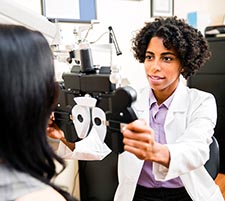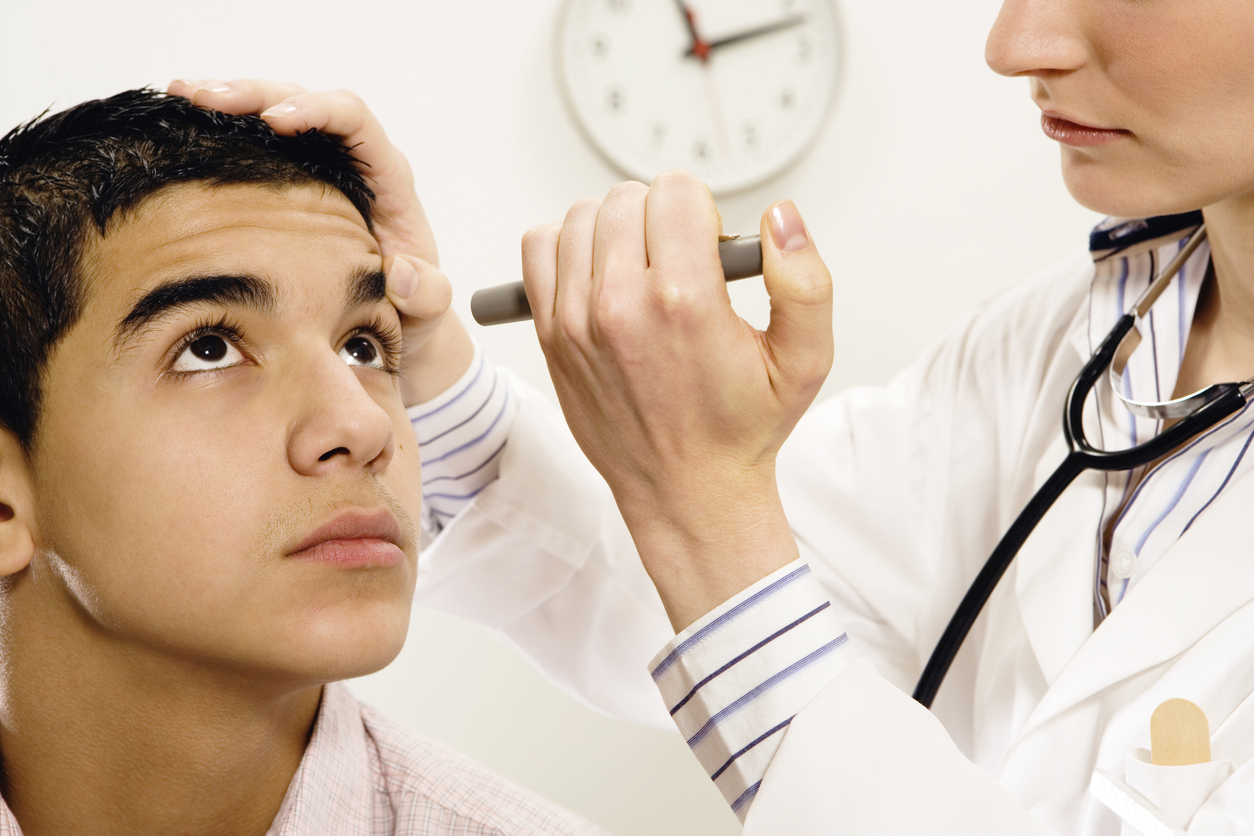Trustworthy Opticore Optometry: Boosting Your Eye Health Experience
Trustworthy Opticore Optometry: Boosting Your Eye Health Experience
Blog Article
The Comprehensive Eye Exam: What to Anticipate Throughout Your Visit to the Eye Physician
A check out to the eye medical professional for a detailed eye test is greater than a regular examination; it is a critical action in safeguarding your visual wellness. From the initial discussion of your case history to the accuracy of the aesthetic skill examination, each component of the examination serves a details objective. Yet exactly what takes place throughout the eye health and wellness evaluation, and exactly how does it influence the prescription process? Comprehending these elements is important for those who desire to keep ideal vision. As we explore each component, the value of follow-up suggestions will additionally end up being clear.
Initial Assessment
The initial appointment throughout an eye examination offers as a crucial structure for understanding a person's visual wellness needs. This phase sets the tone for the entire exam process, permitting the optometrist to gather important details concerning the patient's medical history, way of living, and particular vision issues. By carefully reviewing any kind of pre-existing conditions, drugs, or previous surgical procedures, the eye care professional can tailor the exam to resolve individual needs effectively.

Moreover, the first assessment is a chance for individuals to voice any concerns or problems, promoting a joint partnership with their doctor. This interaction not only ensures that the client really feels informed and comfy but also encourages them to participate actively in their eye health and wellness monitoring. Jointly, these discussions allow the optometrist to design a customized assessment strategy, ensuring optimal treatment and accurate medical diagnosis.
Aesthetic Skill Examination
Starting the core parts of an eye exam, the visual acuity test is made to analyze the intensity and clearness of a client's vision. This vital examination helps figure out exactly how well a person can discern letters or symbols at a standardized distance, normally using a Snellen chart (Eye Doctor). The chart consists of rows of letters that reduce in size from leading to bottom, with the person positioned at a normal distance of 20 feet
Throughout the examination, the client is asked to cover one eye and review out loud the tiniest line of letters they can see plainly. This procedure is repeated for the various other eye. The outcomes are taped as a fraction, with 20/20 vision showing regular aesthetic acuity-- where the patient can see at 20 feet what an individual with normal vision can see at that distance.
The visual acuity test likewise recognizes possible refractive errors such as myopia, hyperopia, or astigmatism, which might necessitate corrective lenses. By establishing a baseline of visual performance, the test is a crucial diagnostic tool that aids the eye care expert in developing a suitable treatment strategy tailored to the patient's unique aesthetic needs.
Eye Health Analysis
Complying with the aesthetic skill test, a thorough eye health and wellness evaluation is performed to guarantee the weblink overall health of the eyes. This important segment of the eye examination involves a detailed examination of both the internal and exterior frameworks of the eye.
Via the usage of ophthalmoscopy or fundus photography, the retina, optic nerve, and blood vessels are thoroughly assessed. In many situations, pupil dilation is performed to improve exposure of the internal eye structures, although this might result in short-lived light sensitivity for the client.
Furthermore, intraocular stress is gauged to screen for glaucoma risk. This is normally done making use of tonometry, which can detect elevated pressure levels that might suggest prospective damage to the optic nerve. Jointly, these evaluations develop a thorough evaluation to keep eye wellness.
Refraction and Prescription
Refraction is an advanced procedure performed by eye care professionals to establish the precise lens power needed to remedy refractive errors such as myopia, astigmatism, hyperopia, and presbyopia. The goal of this procedure is to assess just how light bends as it passes with the eye, enabling the practitioner to identify whether restorative lenses are essential for improved visual acuity.
During the refraction process, the client is asked to browse a phoropter, a gadget which contains different lenses. The practitioner will systematically transform these lenses and ask the person to compare clearness between options up until the most effective feasible vision is achieved. This treatment is crucial in crafting an accurate prescription that defines the proper lens power for glasses or get in touch with lenses.
The prescription stemmed from this treatment not only maximizes vision however likewise acts as a foundation for choosing ideal restorative glasses. It is vital to make certain that prescriptions are routinely upgraded, as changes in vision can occur in time, stressing the value of routine eye evaluations. This thorough interest to detail aids preserve clear, comfy vision in day-to-day live.
Follow-Up Suggestions

During a follow-up visit, the eye medical professional will carry out a series of examinations to review aesthetic skill and check for any kind of adjustments in vision that may necessitate an upgrade to the prescription. Furthermore, the follow-up offers a possibility to discuss any pain or problems experienced with current glasses. Modifications can be made to make certain convenience and effectiveness, whether through lens alteration or framework changes.
For individuals with ongoing problems such as glaucoma, diabetes-related eye issues, or macular deterioration, more constant follow-ups may click be needed. These appointments are essential for taking care of and potentially reducing the progression of eye condition. Following these referrals can considerably add to maintaining aesthetic health and preventing long-term issues.
Conclusion
The comprehensive eye exam is an essential process for keeping visual health and wellness, incorporating a comprehensive analysis of clinical history and vision problems. Secret parts include the visual skill examination, which evaluates vision clearness, and the eye wellness assessment, which analyzes the total problem of the eyes. Refraction tests help figure out the specific lens prescription necessary for optimal vision modification. Follow-up referrals give guidance for ongoing eye care, guaranteeing that any potential issues are dealt with immediately and properly.
A see to the eye physician for a detailed eye examination is more than a regular exam; it is a critical action in securing your aesthetic wellness.Kicking off the core components of an eye exam, the aesthetic acuity test is made to examine the sharpness and clarity of a patient's vision.Adhering to the aesthetic acuity examination, a thorough eye health and wellness assessment is performed to make navigate to this website sure the general well-being of the eyes. These gos to permit the eye treatment professional to monitor adjustments in vision, update prescriptions, and assess the total health and wellness of the eyes. Key components consist of the visual skill examination, which evaluates sight clearness, and the eye health assessment, which takes a look at the overall problem of the eyes.
Report this page